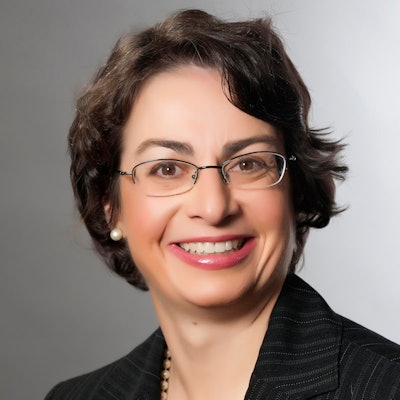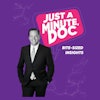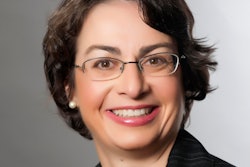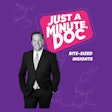
Editor's note: This is a continuation of a yearlong series that is designed to help dentists and team members understand their practice management software better. Today, we are providing you with the inaugural Eaglesoft tip from Ann-Marie DePalma, a technology adviser with Patterson Dental. Earlier this month, we posted a Q&A from a Dentrix expert as well as an expert with Curve Dental. We are also working on the same article format for other practice management software systems.
Q: As we reopen after the COVID-19 disruption, how do we determine the true number of active patients within the practice with Eaglesoft?
A: Eaglesoft considers an active patient as one who has the "active" box checked in the patient preference of the edit patient area. Dentistry, however, considers an active patient someone who has been into the practice within 18 to 24 months.
 Ann-Marie DePalma, CDA, RDH, MEd.
Ann-Marie DePalma, CDA, RDH, MEd.The Patient Analysis Report provides the number of patients who are active versus the number who have been to the practice in 12, 24, 36, or greater than 36 months. The report considers patients who have been seen and walked out with a service code as those in each of the month categories.
The Patient Analysis Report also provides a snapshot of the overall patient population of the practice. This includes the following:
- The number of male and female patients
- Those who have insurance and those who do not
- The age ranges of patients
- The top 10 ZIP codes of patients
- Information about appointments and new patients.
If the practice is using any type of patient engagement program such as RevenueWell, OperaDDS, or Solutionreach, it is important to have the most accurate patient information available since these programs could be sending information to patients who may no longer be considered part of the practice.
There are several reports that can assist in determining the patients within each category, depending on the practice needs. You can use the Patient Master Report with a variety of criteria, such as the following:
- Next preventative appointment
- Next regular appointment
- Marked as responsible party or patient
- Has insurance
- First and last visit dates
You can also narrow the patient list by using the Money Finder Report, with specific set criteria, or the Recall Wizard, set to patients past due for recalls but no scheduled recall within a date range. Money Finder can likewise be used to determine code-based patients; for example, patients who have been in for a comprehensive evaluation (D0150) or limited evaluation (D0140) but have not had a completed service code of a D1110, D4910, or D4341/D4342. See FAQ 20457 (Filter Patient Master), FAQ 9866 (Money Finder), and/or FAQ 9211 (Recall Wizard) for specific report information. You can also obtain quick access to Patterson's FAQ website by typing pattfaq.com in your web browser search field.
Depending on how the team has been tracking recare, from changing the patient recall frequency to the correct update of the service codes, the data within each report may or may not be accurate. For example, many practices have multiple recalls set in the file/preference setting. If this setting is not used correctly, many recare patients could be "lost" to the practice since they may have fallen out of the recare system. Additionally, patients who may be marked as inactive, yet still have "receive recalls" in patient preference, may be listed on a recall report if correct filters are not engaged in the reports.
Reports can be sent to a variety of places for review:
- Money Finder: SmartDoc, InContact, or an Excel spreadsheet (most reports can be exported to Excel by right clicking on the report and saving it as an Excel file)
- Patient Master: SmartDoc, Excel
- Recall Wizard: InContact
SmartDoc is an electronic filing cabinet with folders or document groups where documents are stored. InContact is the interactive contact manager that keeps track of patient contacts for recare or delinquent accounts, tracks responses from the contacts, and can generate mailings.
Determining the true number of active patients is dependent on several factors and criteria used in generating the reports. Ensuring that all team members understand how Eaglesoft updates the recall system, their role in providing accurate data to the system, and using technology found in the patient engagement programs will assist the practice in finding and scheduling patients, both for hygiene and restorative care.
Ann-Marie DePalma, CDA, RDH, MEd, is a fellow and certified educator of the Association of Dental Implant Auxiliaries (ADIA) and a fellow of the American Academy of Dental Hygiene (AADH). She spent more than 25 years in clinical hygiene and is currently employed as a technology adviser/trainer for Patterson Dental. She can be reached by email.
The comments and observations expressed herein do not necessarily reflect the opinions of DrBicuspid.com, nor should they be construed as an endorsement or admonishment of any particular idea, vendor, or organization.



















